What comes to mind when someone mentions China? It’s most likely dirty mega cities or massive crowds. Certainly not established backpacking routes. However, plenty of karst mountains, waterfalls, and lush rice terraces dot the southern provinces of the country. Yunnan province is one of the coolest places for backpackers in China. I mean, what other provinces in China have 18 oddities about them?
For all you backpackers out there, here’s a rundown of this classic Yunnan backpacking route, including useful information on transportation, hostel recommendations, and recommended amount of time for each place.
Yunnan Travel Itinerary
Yunnan has so many amazing places to explore, so this backpacking route is perfect for first-timers to the region. Doing this trip is relatively easy in terms of transportation. All places have a solid infrastructure in place for tourists, and you’ll be able to get by even if you don’t speak Chinese very well.
This route is great for a 2-week itinerary in Yunnan. We’ve included our recommended amount of time in each place. You can adjust it to fit your schedule based on that.
Kunming
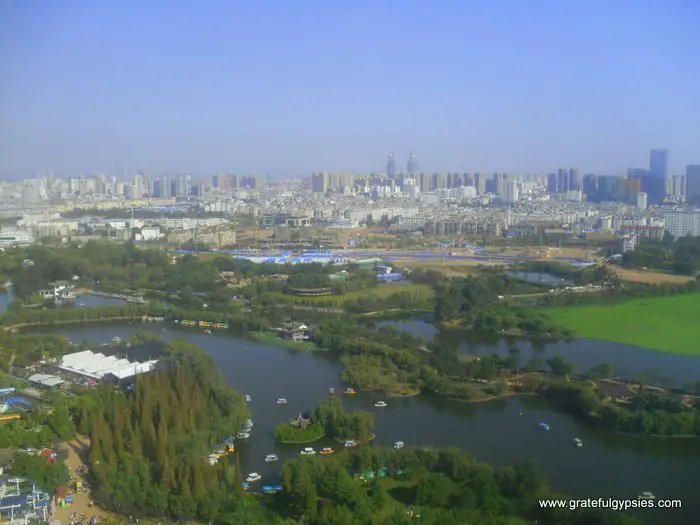
It makes sense to start your Yunnan trip off in the provincial capital. Known as the “Spring City” for its mild weather and green surroundings, Kunming is a much better place to visit than other Chinese mega-cities. We often joked about how it was more of a concrete village than a city after we moved there from Beijing.
Although it’s not full of famous attractions, like the ‘Jing, and it’s not exactly a cosmopolitan metropolis like Shanghai, there’s quite a bit to do in Kunming. Read all about our top 10 things to do in Kunming!
Spend a few days here to start your trip, walking around Green Lake, hiking up in the Western Hills, wandering through the Bird & Flower Market, and getting acquainted with Yunnan food such as the famous “over the bridge rice noodles.”
There’s also a solid nightlife scene, with plenty of local bars to choose from and live music just about every night of the week.
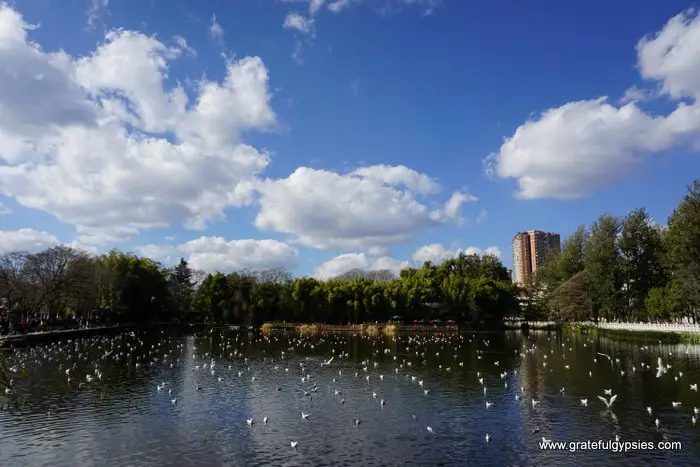
Transport: Kunming has an international airport with direct flights to most big cities in China and quite a few in SE Asia. There’s also a train station and four long-distance bus stations connecting the city to all corners of China. It’s even possible to get there via bus or train from the border with Vietnam, making Kunming a logical first stop for backpackers entering China via Southeast Asia.
Hostel Recommendation: Seeing as how we moved to Kunming and found an apartment straight away, we never actually stayed in a hostel there. However, we know from others that the Hump is a good choice, and we often enjoyed beers on their rooftop. Other backpackers have also had good things to say about both Lost Garden and Upland.
Recommended Time: 4 days, 3 nights. There’s enough to do in Kunming proper to keep you busy for two days but if you have more time, you could climb the mountains just outside of the city beside Er Hai Lake and check out more of the parks such as the Grand View Park.
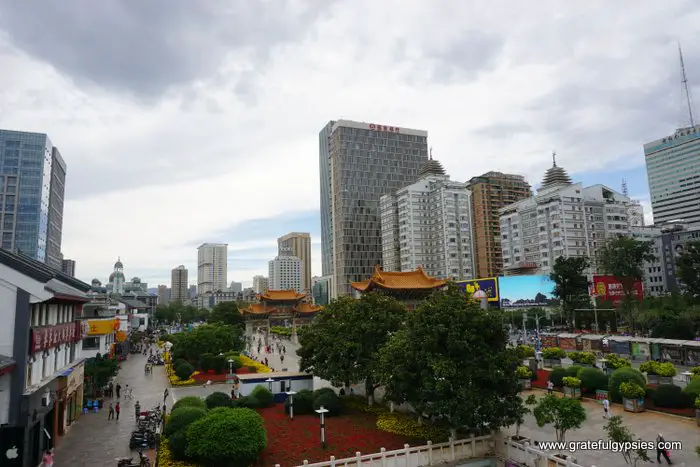
Check out our video tour of Kunming from our “Streets, Beats, & Eats” Series:
subscribe to our Youtube channel
Dali
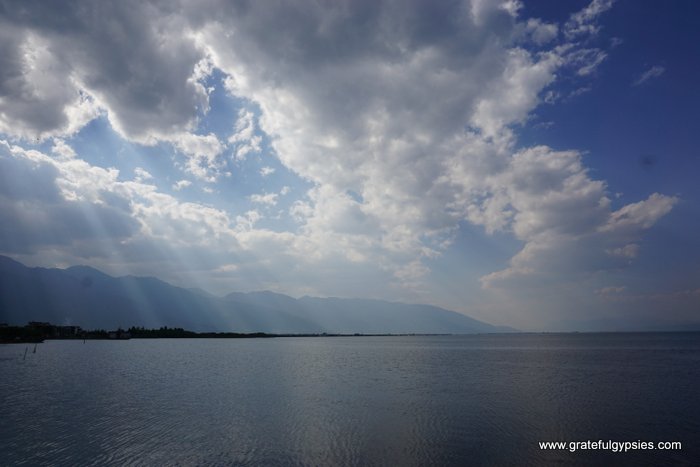
This is one of the most popular places to visit in not only Yunnan but all of China and for good reason.
Surrounded by the Cang Mountain range on one side and the massive Erhai Lake on the other, the old town of Dali is set in an incredibly scenic place.
Although it can get packed here during the summer and major holidays, it’s still possible to avoid the crowds. Base yourself out of the town in a lakeside village, rent some wheels, and do some hiking in the mountains or swimming in the lake. Head into town later in the day when a lot of the packaged tour groups have left, and you can enjoy a wide variety of eating and drinking establishments.
Click here to learn more about what to do in Dali.
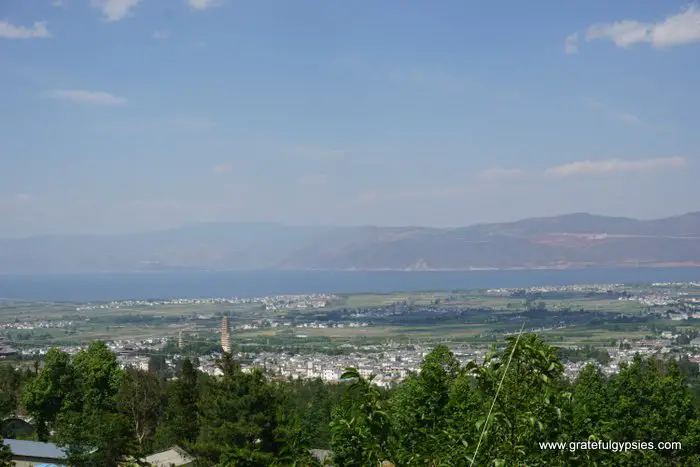
Transport: There’s a small airport in Dali which has direct flights to a few major cities in China (Kunming, Beijing, Guangzhou). The train station is actually in the new city, Xiaguan, but it’s easy to get to and from by local bus. Trains go to both Kunming and Lijiang a few times a day. Of course, you can also catch buses to both of these places and many other towns in Yunnan.
Hostel Recommendations: On our first trip to Dali, we had a great stay at the Sleepy Fish Hostel in the Old Town. There’s a nice garden, two awesome dogs, delicious food, and comfy rooms. On our last trip, we decided to base ourselves in a lakeside village for a quieter, more relaxing stay. If you want to avoid the crowds, you might want to follow suit.
*Update – Sleepy Fish Hostel has unfortunately closed for business but they now have a small apartment above the Blue Gecko Cafe.
Recommended Time: 3 days, 2 nights

Watch our video tour of the little village we stayed in:
Lijiang
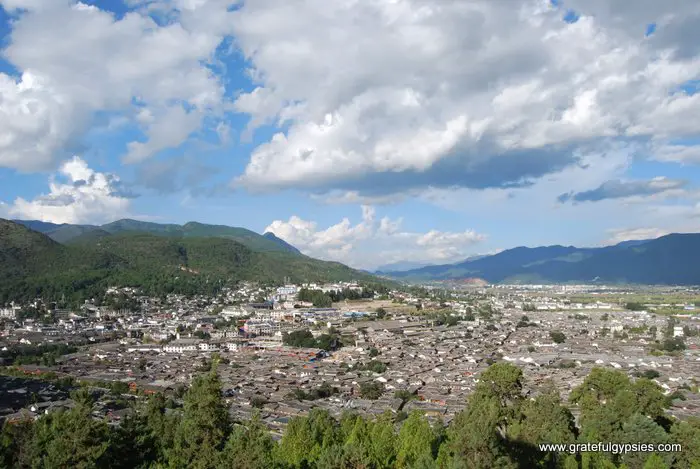
The ancient town of Lijiang was once an important stop on the Old Tea Horse Road and it’s one of the most popular places to visit in China. Given UNESCO World Heritage Status in 1997 as “an exceptional ancient town set in a dramatic landscape,” the town and its surroundings are indeed stunningly beautiful.
Wandering around the cobblestone streets of the town, you may grow weary of selfie stick-waving tourists and bongo drum sellers. Never fear, as you can escape here just as you did in Dali.
Take in the views from the Wangulou Tower, relax around the Black Dragon Pool, or jump on a bicycle and cruise into the countryside to explore other less crowded towns. Lijiang is also home to the Naxi ethnic minority group, and their nightly orchestra performance is a great cultural experience.
Click here to read about things to do in Lijiang.
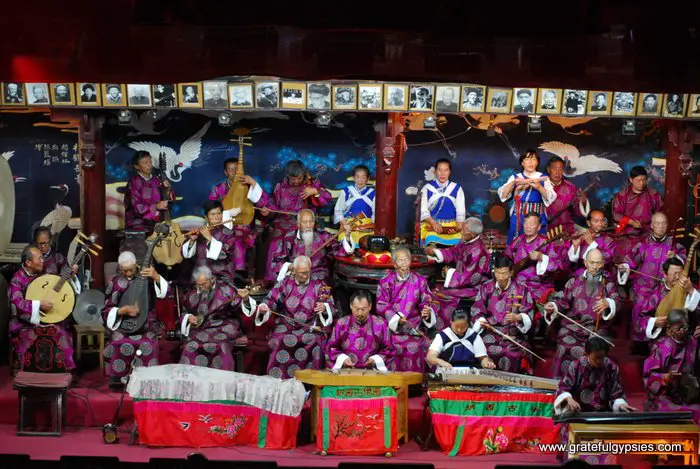
Transport: The airport in Lijiang has flights to Kunming a few times a day, as well as flights to Chengdu, Chongqing, Beijing, Shanghai, Shenzhen, and Guangzhou. It’s also reachable by train from either Kunming or Dali. Buses can take you to these cities as well as smaller destinations across Yunnan.
Hostel Recommendations: Not wanting to stay in the belly of the beast, we opted for the quaint October Inn located a short walk outside of the town. The owner is a super nice, helpful guy and his hostel feels like home away from home. Also, this place just might have the best dorm beds we’ve ever stayed in.
Recommended Time: 3 days, 2 nights
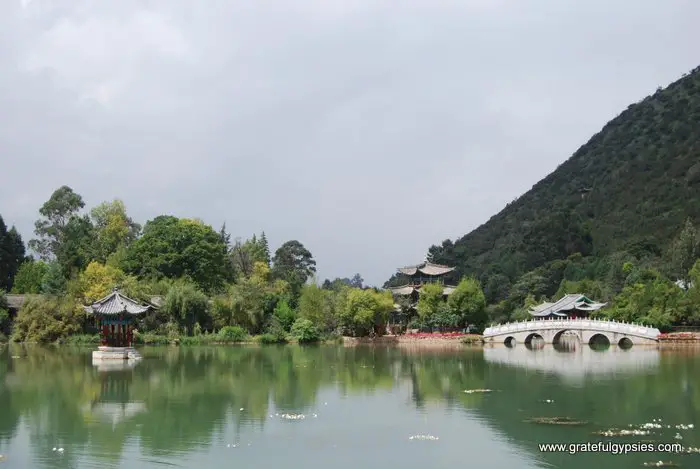
Watch our video tour of Lijiang:
Hike Tiger Leaping Gorge

For many backpackers, a hike along the Tiger Leaping Gorge is the main reason for visiting Yunnan. Dedicating two days to the trip allows you to spend the day climbing high above the rushing Yangtze River while you take in the views of the Jade Dragon Snow Mountain.
There are a few guesthouses along the way, so you can get a room, have a shower, and enjoy dinner and beers with fellow travelers. The second day takes you down to the spot on the river where a tiger supposedly jumped over, hence the name. It’s an epic, incredibly scenic, and very rewarding hike.
Click here to read about our experience hiking Tiger Leaping Gorge.
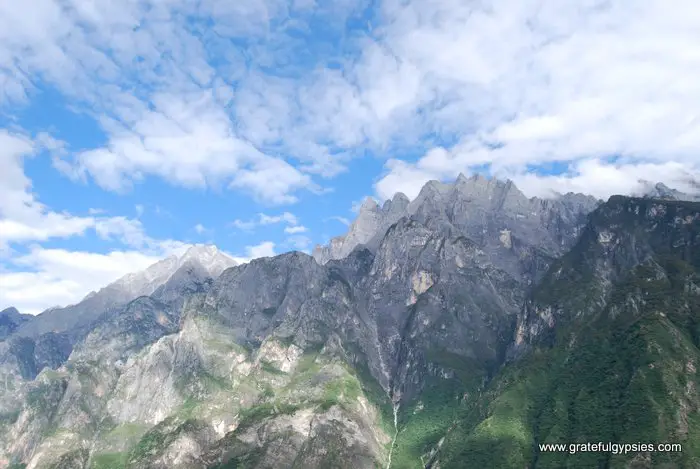
Transport: The best way to access the Tiger Leaping Gorge is by bus from either Lijiang or Shangri-la. When we took a bus from Lijiang, we were dropped off at the start of the trail and our larger bags were brought to Tina’s Guesthouse up the road. We collected them the next day after finishing the hike and arranged a bus onward towards Shangri-la.
Hostel Recommendations: We stayed at the appropriately named Halfway Lodge. There are a few other places around that stretch of the trail if they’re full. If you want to turn it into a 3-day trip, you could stay at the Naxi Family Guesthouse on your first night earlier on in the trail, or get a room at Tina’s or another spot down on the road after finishing up. Tina’s is always crowded. We decided to walk around for a bit and check out some of the other guesthouses. We stayed to the guesthouse just to the left of Tina’s. It had a better view and was cheaper.
Recommended Time: 2 days hiking, 2 nights in two different guesthouses. This gives you enough time to do the hike above the river and hike down to the famous rock the leaped from.
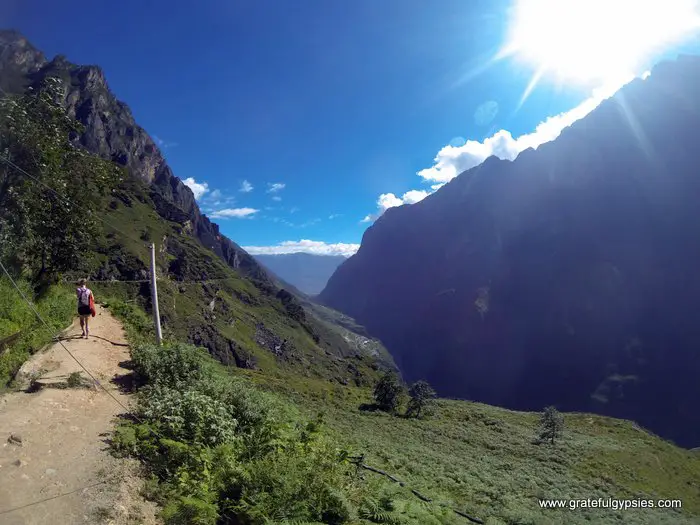
Watch our video tour of Tiger Leaping Gorge:
Shangri-la
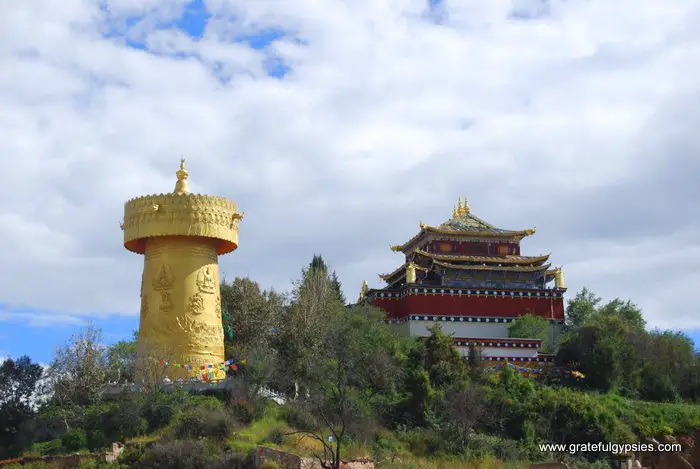
While it may not actually be the paradisiacal town from the novel “Lost Horizons,” the Chinese version of Shangri-la is quite beautiful. Unfortunately, an accidental fire destroyed much of the old town a few years ago. You won’t want to spend much time in town anyway, as the surrounding area is what people really come for.
Many come to visit Pudacuo National Park, the first ever in China. As we were at the end of a long backpacking trip, we opted for the much easier and cheaper day by renting bicycles in town and cruising them around Napa Lake.
Click here to read about things to do in Shangri-la.
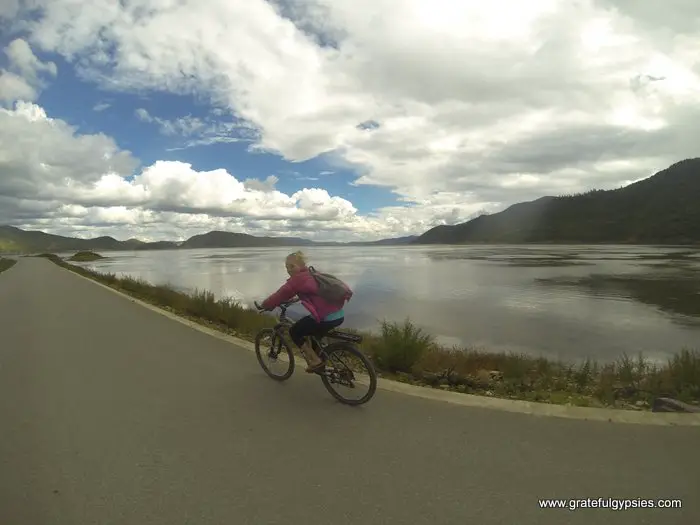
Transport: You can fly in or out of Shangri-la via Kunming, Chongqing, and Lhasa. But chances are you’ll be getting here and leaving by bus. There isn’t a rail link yet, but there’s one in the works connecting Shangri-la with Lijiang.
Hostel Recommendations: We thoroughly enjoyed our stay at Tavern 47, an old house that thankfully survived the fire. The owners are a Korean-Naxi couple, and they’re very helpful with advice on what to do in the area. Plus, they make a yak meat burger – where else are you going to have that?
Recommended Time: 3 days, 2 nights
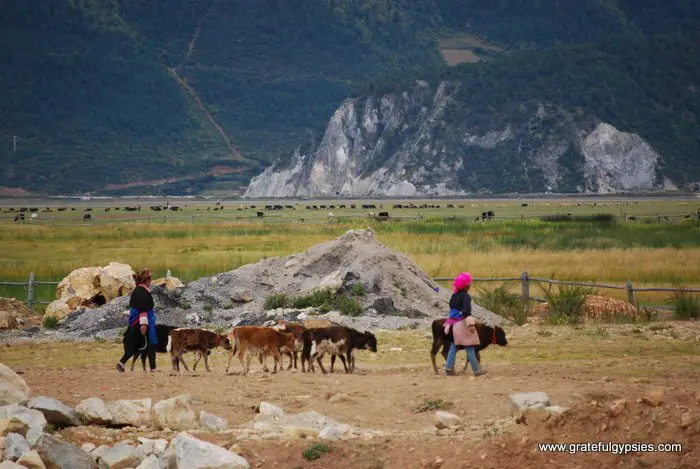
Watch our video tour of Shangri-la:
Shaxi
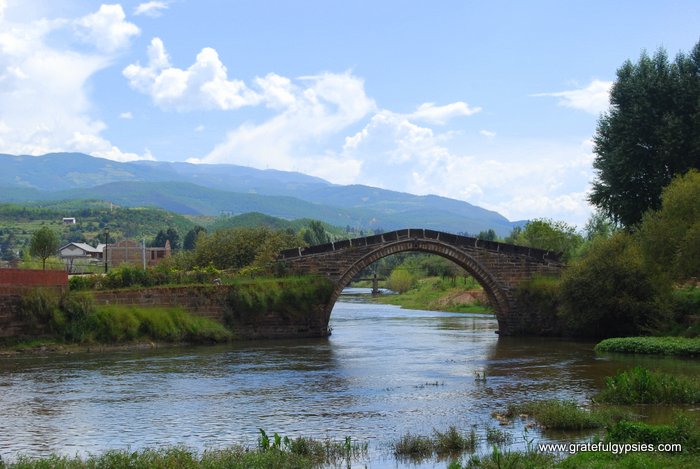
Shaxi was once an important trade station on the Old Tea Horse Caravan Road, a trading route connecting southwest China to India via Tibet. When the Tibetans developed a taste for tea in the Tang Dynasty, they would trade their horses for tea from Yunnan.
By the Ming and Qing Dynasties, the Shaxi Valley was flourishing. It attracted people from many different ethnic groups and cultures. The Hani from Southern Yunnan traded tea and cloth, the Muslim Hui brought Yak furs and horses, and the Naxi from Lijiang traded timber.
This all came to an end in the 1950s when the Communist Party put a ban on private markets. The locals reverted back to agriculture and the area was mostly forgotten and left in isolation.
In 2001 the World Monument Fund added Shaxi’s market square to its Watch List of 100 Most Endangered Sites and so the local government began a restoration project with the funds it was given. Now it has attained UNESCO World Heritage status and is slowly beginning to attract more and more curious travelers looking to escape the crowds of Dali and Lijiang. Go on a weekend so you can check out the Friday market!
Click here to read about things to do in Shaxi.
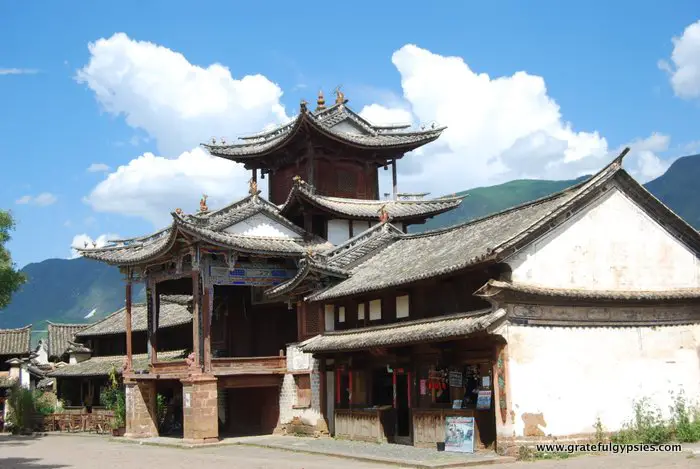
Transport: From Shangri-la, we took a bus to the nearest town, Jianchuan. Then we switched to a minibus for the hour-long, curvy drive to Shaxi. The minibusses hang out at the main bus station and head to Shaxi once they’re full.
Hostel Recommendation: We stayed at the Horse Pen 46 Hostel. There are several other hostels, guesthouses, and nice hotels in the small town. We chose the Horse Pen 46 because of its history. It was originally a place for travelers to board their horses when they came to the Friday market.
Recommended Time: 4 days, 3 nights. There isn’t much to do in the town itself. The Friday market is the most exciting event. There are several cool things to do in the area around the town. You can take a day trip to some of the temples or go climb the mountain nearby. If neither of these things tickles your fancy, you could stay for 2 days and add more time to one of the other places.
Watch our video tour of Shaxi:
Where Should You Go Next?
For most, this is the end of the line for their Yunnan trip. Some continue on to Tibet, others head to Sichuan, and some head back to Kunming to catch a flight or train in another direction. If you’d like to keep going north through Yunnan, you could head to the town of Deqin next. We didn’t make it all the way there but have heard it’s beautiful.
I had to head back to Kunming to start a new job and replenish our funds after our gap year travels. Stay tuned for more in-depth posts around all these destinations over the coming weeks. In the meantime check out our China page where you can learn more info about the country. Watch more videos like the ones in this post on our YouTube channel!
Like This Post? Pin it For Later!
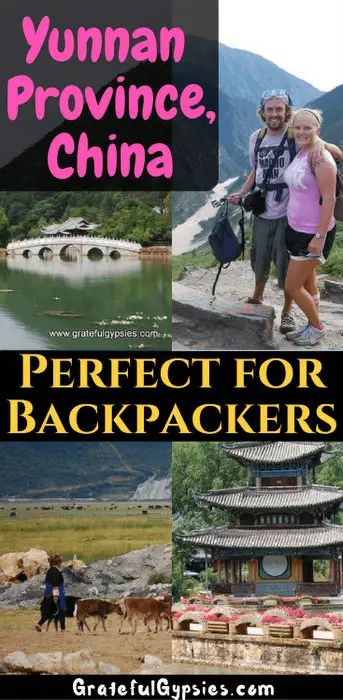


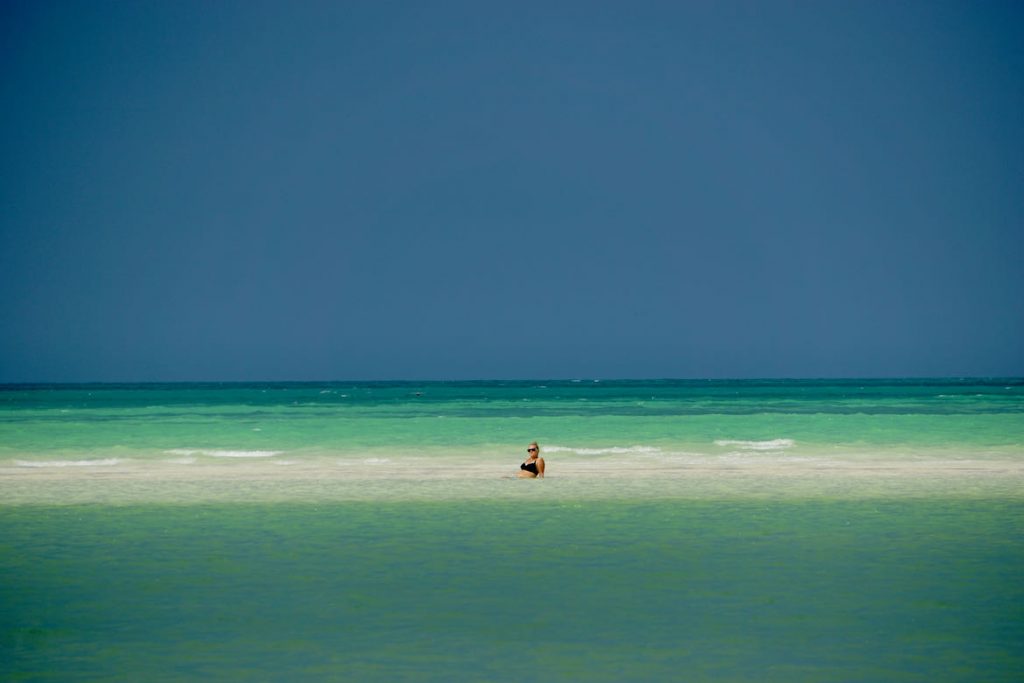
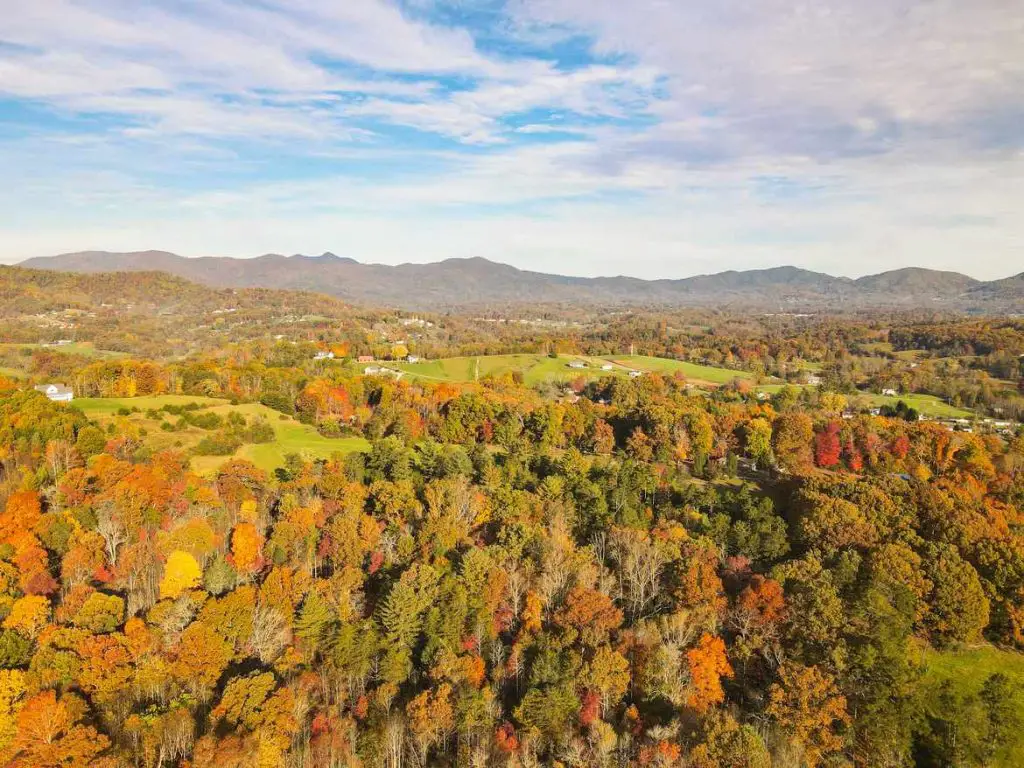
Hi Rachael,
I am a Singaporean Chinese girl looking to travel to Yunnan on my own in December this year. Could you please share some tips on safety and things to lookout for when on the trip?
Thank you!
Hi Joyce!
Thanks for reaching out! I always felt very safe in Yunnan and all of China. The biggest thing you have to look out for is petty theft like pickpockets and maybe less than honest taxi drivers that might overcharge you a bit but other than that there’s really nothing to be worried about. Hope this helps! Let me know if you have other questions 🙂
Hello Rachel, thank you for useful tips! We are thinking about backpacking in Yunnan province next year in February- do you think it will be manageable with the weather and with Chinese New Year (mid-February)? I´m afraid there will be too many Chinese tourists and it will still be quite cold. Thank you!
Hi Martina! Thanks for checking out the post! Glad you found it useful. The areas mentioned in this post will be cold and insanely crowded during Chinese New Year. However, we spent CNY in the south eastern part of the province in 2015. We went to Jianshui and Honghe. It’s much lower in elevation and a much nicer temperature at that time of year. It didn’t get crazy busy until after the New Year’s Day. Depending on how much time you have, you could try to plan your trip to that part of the province and then head to Dali, Lijiang, etc. after things have calmed down a bit.